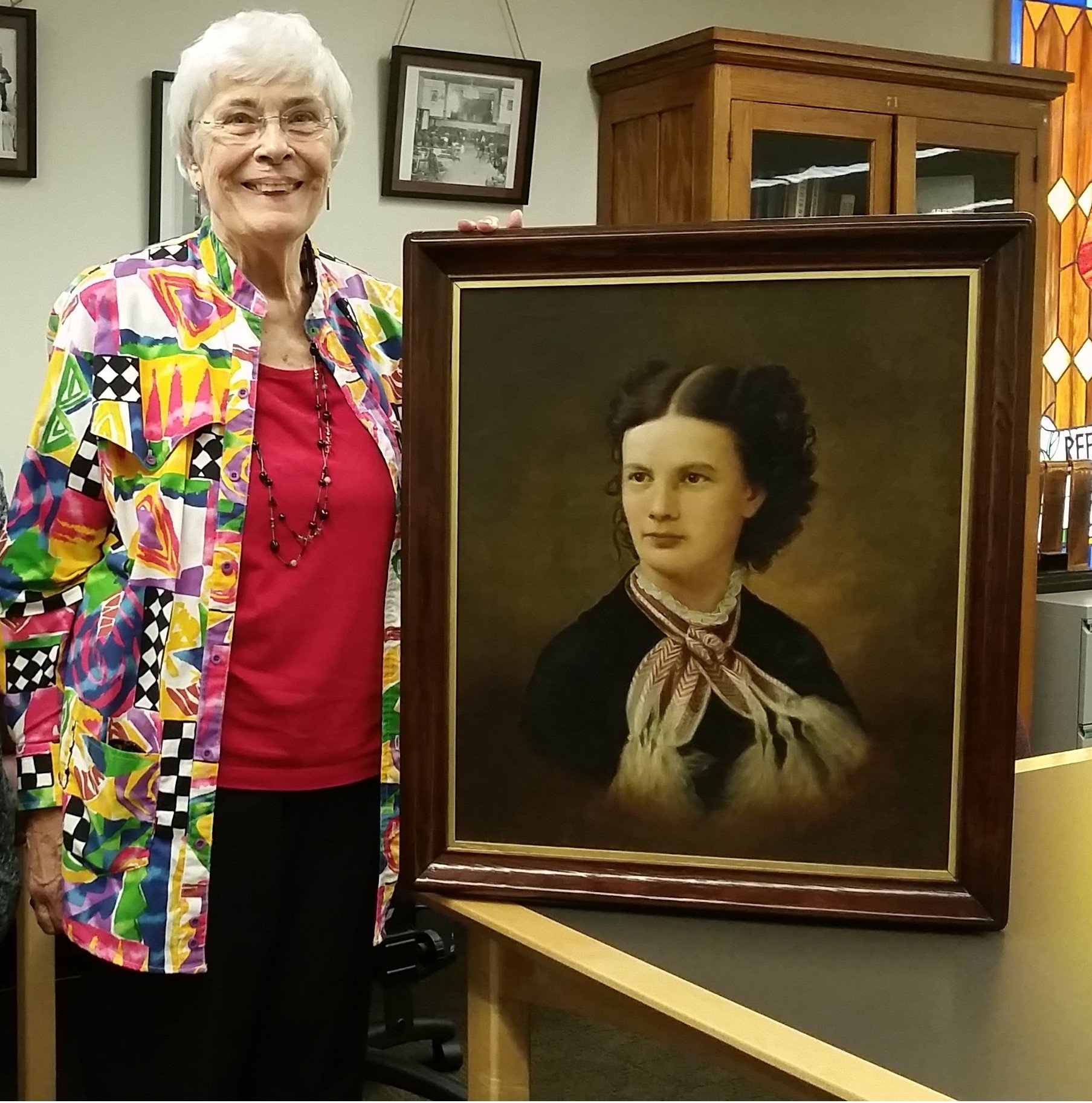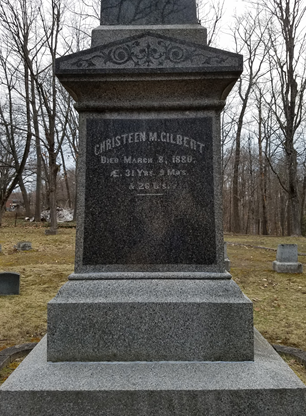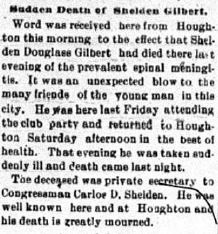This week’s blog post is courtesy of our Assistant Archivist Resident, Emily Riippa. It provides a thoughtful spotlight on one of our reading room art pieces.
——————————————————————————————————————————
For the past year, visitors to the Michigan Technological University Archives and Copper Country Historical Collections have been captivated by the portrait of a striking young woman that graces a wall in the reading room. This painting of Christeen Shelden was donated by Therissa Jane Libby, a great-granddaughter of the subject, in 2016; a previous blog post by University Archivist Lindsay Hiltunen provides additional information about Mrs. Libby’s generous gift.
While our staff knew the provenance of the portrait, our knowledge of Christeen herself remained minimal. As we passed the painting many times in our daily work and fielded questions from patrons who had paused to admire it, the sense of mystery grew. Christeen was a scion of the respected Shelden family, yes, but what more could be said about her experiences? Did she live to a happy old age, or was her life cut tragically short? Did she pursue one of the careers available to women of her time? Did she marry and raise a family? As archivists, naturally, we turned to historical documents to answer these questions. Like researchers who come to investigate their family history here, we now are able to see this face from the past with greater clarity.

Christeen Shelden was born in May 1848 near the Portage Entry, where her father had recently built a store on the sandbars near Jacobsville. She was the third child and only daughter of Ransom and Therissa (Douglass) Shelden; Carlos and George were several years older, and Ransom, Jr., would join the family four years later. Hoping to further capitalize on the supply needs of the nascent copper boom, Ransom and his business partner relocated the store to Quincy Mine in the early 1850s and then to Houghton. Their operations flourished: by 1860, Ransom Shelden informed the census taker that his property was worth some $175,000.
Christeen grew up in Houghton, surrounded by her family and by the world that had sprung up around the mines: mercantiles, hotels, saloons, investors like her father, laborers who had spent everything they had to move to the Copper Country for a chance at something more than subsistence. Many of her neighbors were American-born, like her family, but just as many had come from places like Canada, England, and Germany. Undoubtedly, living in a boom town made for an interesting childhood, with the surroundings adding a real world touch to Christeen’s education. Based on the presence of a teacher named Emily Collingwood in the Shelden household in the 1860 census, it seems likely that Christeen received her formal schooling in her home. Census records also indicate that, as a young adult, Christeen probably did not elect to become a schoolteacher herself, one of the few careers available to a woman of her socioeconomic status. In 1870, her occupation was listed as “at home,” meaning that she likely filled her days by assisting her mother and their servants in household upkeep or by attending to social and charitable obligations. The style of Christeen’s clothing in the portrait suggests that it was painted at some point in the early years of this decade.
Love found Christeen in her twenties. She met a young man named Edwin Salmon Gilbert, a bookkeeper and the son of a Baptist minister. Edwin had spent his youth moving around the country, following his father between pastorates in his native New York, Illinois, and Marshall, Michigan, according to various federal censuses. From Marshall, the youthful accountant headed north and took a job with Ransom Shelden in about 1873. Christeen and Edwin fell in love and were married in Houghton on February 28, 1874. They remained close to her family: when the Michigan state census was taken later that year, the Gilberts and the Sheldens were recorded as living side by side.
Christeen and Edwin’s brief marriage was marked by moments of profound joy and sorrow. They welcomed their first child, Shelden Douglass, nine months after the wedding; a second son, Edwin Gage, followed in April 1876. Sadly, their next two children, who arrived in March 1877 and April 1878, were stillborn. Therissa I. Gilbert, named for her grandmother, was born on October 2, 1879. Less than six months after her daughter’s birth, Christeen died; her headstone in the Shelden plot at Houghton’s Forest Hill Cemetery gives the date as March 8, 1880. She was 31 years old.

After Christeen’s death, Edwin and the children moved south to Illinois, residing with his parents at census time and likely trying to come to terms with their loss. They eventually returned to Houghton County. In 1883, Edwin remarried in Houghton and moved with his new wife to Santa Cruz, California, where voter registers the following year recorded him as a merchant. It is unclear whether Shelden, the younger Edwin, and Therissa accompanied him immediately or whether they remained with extended family in the Midwest. What is apparent, however, is that Christeen’s brothers felt it important that they take her children under their wing. Shelden Gilbert showed an aptitude for the law, and his name appeared in the alumni directories of Northwestern University and Yale Law School. When Carlos Shelden was elected to the United States House of Representatives in 1896, he chose his young nephew as his private secretary. Sadly, Shelden Gilbert’s life was even shorter than his mother’s. While visiting the Copper Country in April 1899, the 24-year-old contracted cerebrospinal meningitis and died within a day.

Edwin G. Gilbert, meanwhile, studied at Northwestern University and what was then the Michigan College of Mines, developing his abilities as a civil and mining engineer. Like his father, he moved to California, residing in Plumas County and San Diego. He died there in 1943, leaving a wife and one son.
Therissa Gilbert seems to have resided in Illinois for a time before also making the migration to California, where she married pharmacist Edwin Elliott at the age of 21. Their two sons thrived as professionals: the elder, Shelden, was a professor of law at New York University and dean of the University of Southern California School of Law, while Edwin Elliott, Jr., became a teacher and attained the rank of commander in the Navy during World War II.
It was Therissa Gilbert Elliott who inherited her mother’s portrait. Thanks to her faithful care and preservation of the painting over the years–a responsibility later taken up by her granddaughter–Christeen’s confident and thoughtful countenance will continue to charm onlookers well into the future, just as it has for over a century.